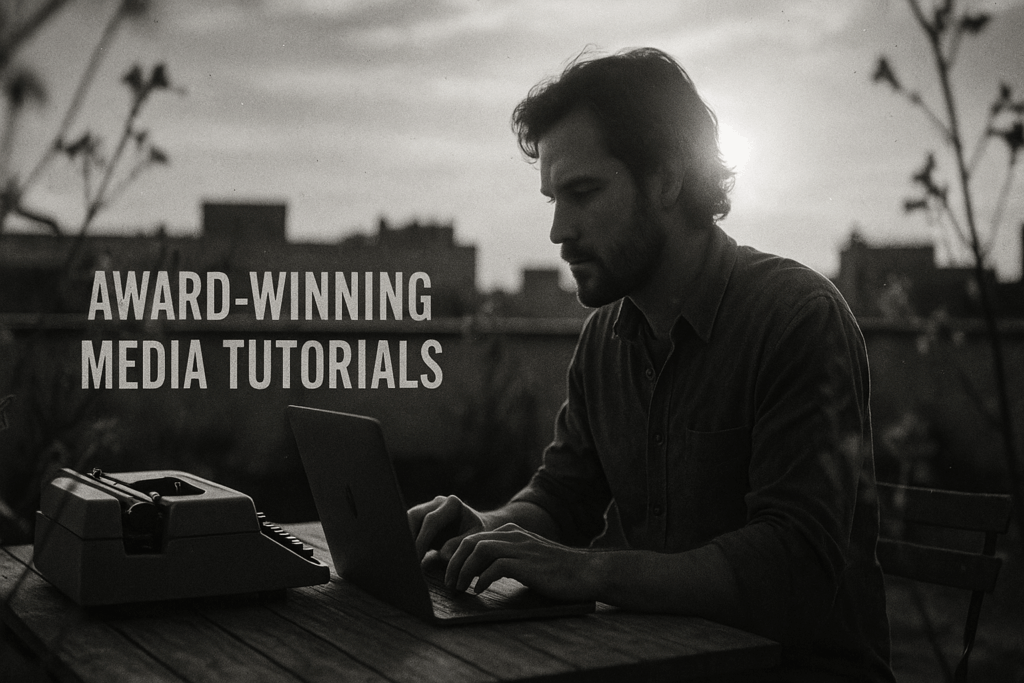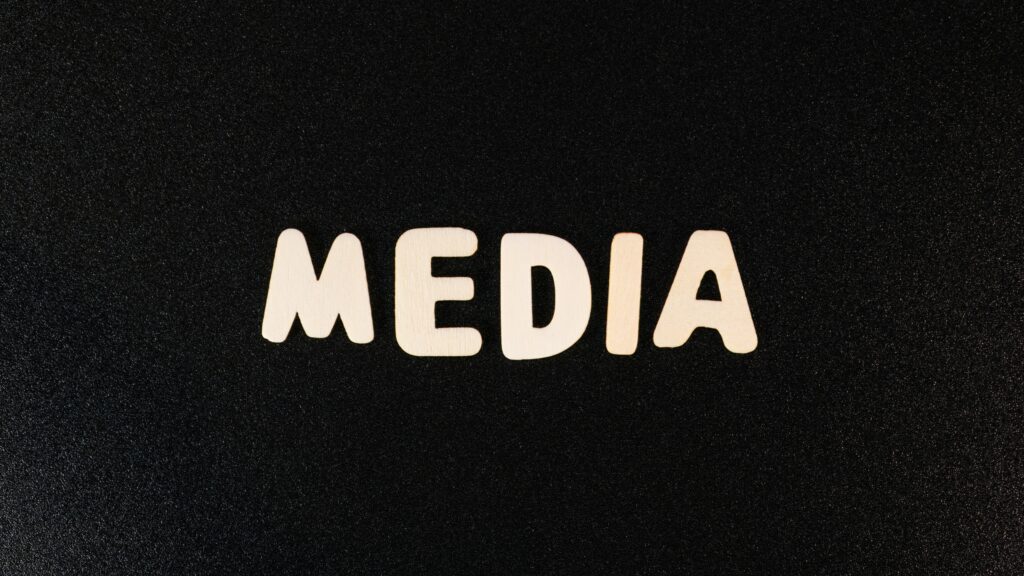Introduction: Why Awards Matter—but Lessons Matter More
Media awards are nice. But the trophy isn’t the point. Recognition feels good—but for teams behind the camera, the real win is what they learned getting there. Great campaigns aren’t just polished—they’re built on weeks (sometimes months) of strategic calls, creative tension, and fast pivots when things don’t work.
What separates an award-winner from the rest usually isn’t production value. It’s clarity of intent, a clear grasp of audience behavior, and sharp execution under pressure. These projects force teams to work better, not just harder. When a campaign lands, it reveals something deeper: a disciplined creative process that adapted without losing focus.
Smart marketers and content creators don’t just admire that—they reverse-engineer it. They look at what worked, what didn’t, and how timing, collaboration, or sheer persistence tipped the balance. It’s not about basking in applause. It’s about carrying those lessons into the next project, when no one is watching (yet).
Core Lesson 1: Story First, Always
A slick edit can’t save a heartless story. And in 2024, audiences are watching with sharper instincts. Flashy transitions, drone shots, and sound design might grab attention, but they don’t hold it. Emotion does. The projects that stick—the ones winning awards and actually driving impact—build around a core human moment. One feeling. One truth. One reason to care.
Clarity beats complexity. Creators who think they need to dazzle usually end up confusing. Meanwhile, the campaigns that go straight for the gut—tight scripting, real emotion, zero fluff—land harder and go further.
Case in point: last year’s viral health PSA that stripped out all production glamor. No music. No filters. Just a single camera on a nurse telling the truth about her shifts during flu season. It outperformed a multi-million-dollar studio campaign on the same topic. Same message, different delivery—and only one connected.
If there’s one takeaway here, it’s this: don’t overthink the shine. Build your work around what matters, then get out of its way.
Core Lesson 2: Know Your Platform
One-size-fits-all storytelling doesn’t work anymore. A story that sings on Instagram might fall flat on YouTube or LinkedIn. The best media projects know how to shift gears. They adapt tone, tweak pace, trim length—or stretch it—based on how people actually engage on each platform.
That means studying more than just the algorithm. It’s about tuning into platform culture. Understand what your audience expects where they find you. TikTok rewards quick payoff and quirky energy. YouTube still values depth and structure. Twitter (or X, depending who you ask) leans into real-time wit and commentary. If you talk the wrong language in the wrong room, people tune out.
Award-winning teams build flexible campaigns that shape-shift with intent. They don’t duplicate—they translate. Each platform gets a version of the message designed with purpose, not leftovers from a hero cut. That’s how reach becomes resonance.
Core Lesson 3: Collaboration is the Real Secret Sauce
Behind the glossy finish of any award-winning campaign is an unsexy truth: the team figured out how to actually work together. Not just coexist in the same Slack channels—actually move in sync. Creative, marketing, legal, and analytics didn’t just drop in at different points. They were part of the same conversation, early and often.
The dream team isn’t about titles—it’s about trust and timing. When creatives understand brand guardrails before they pitch. When analytics teams flag a shift in audience behavior fast enough for strategy to flex. When legal doesn’t become the bottleneck because they were consulted in phase one, not five minutes before publish. That’s when things click.
And crucially, the best ideas don’t always come from the top. The intern might spot the missing angle. The junior editor might catch the pacing issue. Ego gets checked at the door in top-tier teams. Execution improves when input is democratized. Awards may credit the directors—but the workflow wins it for them.
Core Lesson 4: Performance Data Isn’t the Enemy
Award-winning projects don’t treat analytics as an afterthought. They bake metrics into the strategy from day one. This doesn’t mean letting spreadsheets write your script. It means asking: What do we want to measure, and why? Clickthrough rates, completion time, lift in brand perception—pick your KPIs early and design for them.
The best teams know how to interpret early signals without overreacting. When numbers flag, they pivot fast—but smart. That might mean re-editing a sluggish intro, tightening the call-to-action, or changing the headline to better reflect the story’s core. The trick isn’t chasing trends; it’s catching drift before it derails momentum.
Gut instinct still matters. Storytelling at its best can’t be built by committee or run like an A/B test lab. But ignoring data is just freelancing with a blindfold on. The strongest creatives know when to listen to the numbers—and know when to push through them.
In one standout campaign, day-three data showed audience drop-off just 20 seconds in. The team reworked the opening with a stronger hook and re-released within a week. Engagement doubled. Awards came later.
Core Lesson 5: Timing Isn’t Everything—But It’s Close
Great stories still need the right moment to shine. Award-winning media projects consistently show us that timing can elevate a strong idea into an unforgettable campaign—or let it fade into obscurity.
Understanding the Timing Trifecta
Success often hinges on managing three key layers of timing:
- Lead Times: The more ambitious the campaign, the earlier you need to start. Many standout projects began months—sometimes even a year—in advance.
- Trend Cycles: Media trends evolve faster than ever. Recognizing when to piggyback on a rising theme (rather than one that’s peaked) makes content feel timely, not late to the party.
- Distribution Windows: Knowing when your audience is most receptive—whether that’s a specific season, time of day, or tied to a cultural moment—can significantly boost visibility.
Real-World Timing Wins
Some standout campaigns succeeded not just because of what they said but when they said it. For example:
- A socially themed video series released just ahead of a major cultural anniversary drew attention from both media and new advocates.
- A campaign that strategically launched a teaser during a competitor’s announcement week stole share of voice and generated organic buzz.
Timing added a layer of momentum that content alone couldn’t reach.
Contingency Planning: A Quiet Superpower
You can’t control everything—but you can prepare better than most. Projects that win big usually have solid backup plans, including:
- Alternate Launch Dates: Just in case of external conflicts or delays.
- Modular Content Assets: Allows for last-minute tweaks based on emerging audience feedback.
- Internal Communication Protocols: So everyone’s aligned when pivots have to happen fast.
Planned flexibility is what enables a media team to respond in real-time while staying on-message and on-brand.
Final Thought
Exceptional timing is intentional, not accidental. It’s not just about going fast—it’s about being ready when the moment is right. Winning teams build space for adaptability into their timelines from day one.
Inside the Headlines: What Case Studies Reveal
Strip away the surface spin, and the backbone of standout campaigns starts to look familiar. Whether it’s a grassroots political blitz or a viral product drop, the DNA repeats: sharp positioning, relentless message focus, and teams that knew their timing.
Most winning campaigns aren’t magic—they’re managed. The headline-stealing ones keep things deceptively simple: one core message, pushed hard across channels. They plan for chaos, not perfection. Buffer time, backup assets, cross-team alignment—all part of the blueprint.
What they don’t do is gamble everything on a trend or a fluke. The best teams respect the unpredictable nature of a live rollout, but they don’t glorify luck. They build in structures to ride the wave—even if it breaks differently than expected. They also know when to pull or pivot fast.
Want receipts? Check real campaigns that nailed the balance of planning and adaptability: Case Studies — Media Campaigns That Made Headlines.
Final Takeaways
Cut Through the Noise: Focus on the Essentials
Award-winning media projects often share a simple truth: success comes from clarity, not complexity. It’s tempting to add layers of polish, special effects, or elaborate messaging—but the core of any powerful campaign comes down to just three things:
- A strong, clear idea
- A deep understanding of the audience
- A story told with clarity and intent
Before chasing originality, ensure your message is unmistakable and your execution purposeful.
Discipline and Empathy Win the Long Game
Awards don’t create results—results create awards. Behind every celebrated project is a team that practiced:
- Discipline — Consistent execution, attention to detail, strategic timing
- Empathy — For the audience’s needs, environment, and emotional landscape
Creators who balance the art of storytelling with a real understanding of human behavior tend to build work that resonates—and performs.
Leave the Ego, Take the Lessons
Every project—win or lose—offers value. The most successful teams know when to celebrate a trophy and when to move on with a better toolkit, not a bigger ego.
- Evaluate outcomes honestly, not emotionally
- Share learnings across your team
- Let success refine your instincts, not inflate your assumptions
What matters in the long term isn’t the shelf of awards, but the process and mindset that earned them.



